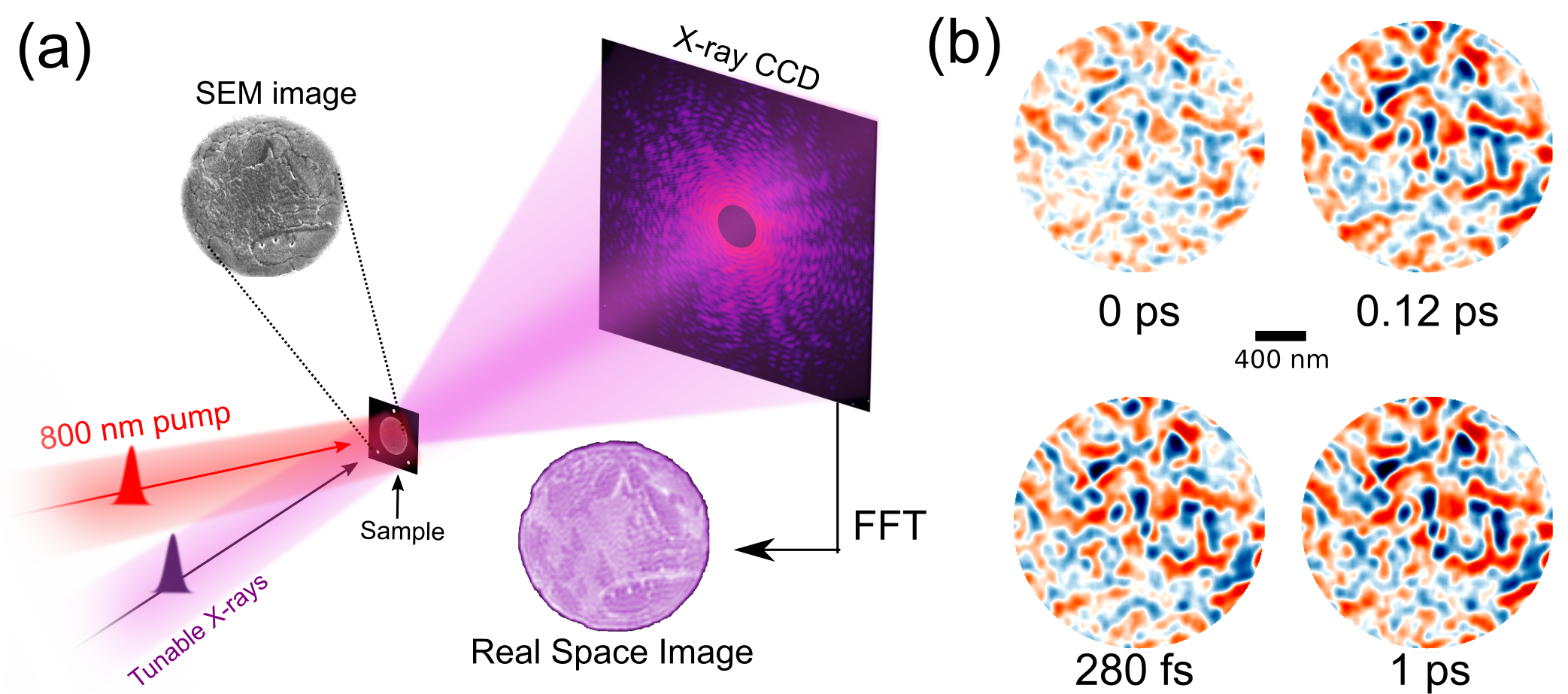Ultrafast X-ray Imaging of Nanoscale Dynamics
RESEARCH PROGRAMMES
P2: Quantum materials at the nanoscale
P5: Ultrafast phenomena at the nanoscale
PhD PROJECT DESCRIPTION
Advanced materials are key to solving a wide range of pressing problems, like sustainable energy harvesting and more efficient computing. The properties of these materials are generally determined by their behavior at the nanoscale when responding to stimuli like light-absorption or voltage pulses, but directly imaging these nanoscale dynamics has proven exceptionally challenging because of three simultaneous requirements: nanometer spatial resolution, femtosecond time resolution, and ability to image random events.
In our group at IMDEA Nanoscience we have pioneered a new technique capable of imaging processes like phase-transitions or polaron-pair motion at the nanoscale, Coherence Isolated Diffractive Imaging (CIDI) [see Science Advances 7 (33) eabf1386, Nature Physics 19 (2) 215-220, and arXiv:2402.10585]. Using intense ultrafast X-ray pulses available at large scale facilities we take snapshots of dynamical processes at the nanoscale through computational imaging methods, which require extensive numerical analysis. While we have so far focused on applying our method to light-induced phase transitions, in this project the successful candidate will apply CIDI to a series of technologically critical problems:
- Polaron formation and propagation following photo-absorption: this is the key underlying process in artificial photosynthesis and photo-catalysis, but has never been directly visualized.
- Skyrmion nucleation and propagation: skyrmions are hoped to be highly efficient information carriers and memory bits in next-generation spintronics, but imaging their fast dynamics has proven challenging.
- Memristive switching in oxides: memristors are devices based on stochastic switching events which can mimic neuron activity for neuromorphic computing applications. Imaging this stochastic processes in real nanoscale memristors has only been done at dramatically reduced time or length scales.
We aim to use CIDI to image these processes for the first time.
Secondments at the Max Born Institute for Ultrafast Spectroscopy (Berlin) to help transfer our methodology from large scale facilities back to laboratory scale experiments, and at the BOREAS beamline of the ALBA synchrotron (Barcelona), are forseen. There will also be regular travel for X-ray beamtimes to Germany, the United Kingdom and Korea. National collaborations with researchers at ALBA, ICMAB, ICFO (Barcelona) and the Universidad Complutense de Madrid (Madrid) are expected in addition to internal collaborations at IMDEA Nanoscience.
The PhD candidate will participate in regular in group meetings and have the opportunity to present at both national and international conferences, as well as attend the international Ultrafast X-ray Summer School.

Figure 1: (a) Real space imaging of dynamic processes by coherent diffractive imaging. (b) Real time nanoscale dynamics of a light-induced phase transition.
APPLICANT’S REQUIREMENTS
A typical background would be in physics, optics, or electrical engineering. Specific experience with Fourier transforms and computational imaging is valuable. High knowledge of written and spoken English is required, and proficiency in programming in Python is highly desirable. Extensive data analysis time is foreseen.
RESEARCH GROUP DESCRIPTION
The Ultrafast Science of Quantum Materials group at IMDEA Nanoscience is headed by Dr. Allan Johnson, and studies dynamical effects inside quantum materials using a combination of laboratory-based ultrafast lasers and large scale X-ray facilities. We rely on a strong international network of collaborators from North America, Europe and Asia to perform these studies. We are currently six people (PI, 2 postdocs, 3 PhDs) and pride ourselves on a friendly and welcoming atmosphere.
Further details at: https://www.nanociencia.imdea.org/es/ultrafast-science-of-quantum-materials/home
RESEARCH SUPERVISOR
Dr. Allan Johnson
allan.johnson@imdea.org
Research Group website: https://www.nanociencia.imdea.org/es/ultrafast-science-of-quantum-materials/home
Other websites: https://allansjohnson.net/
